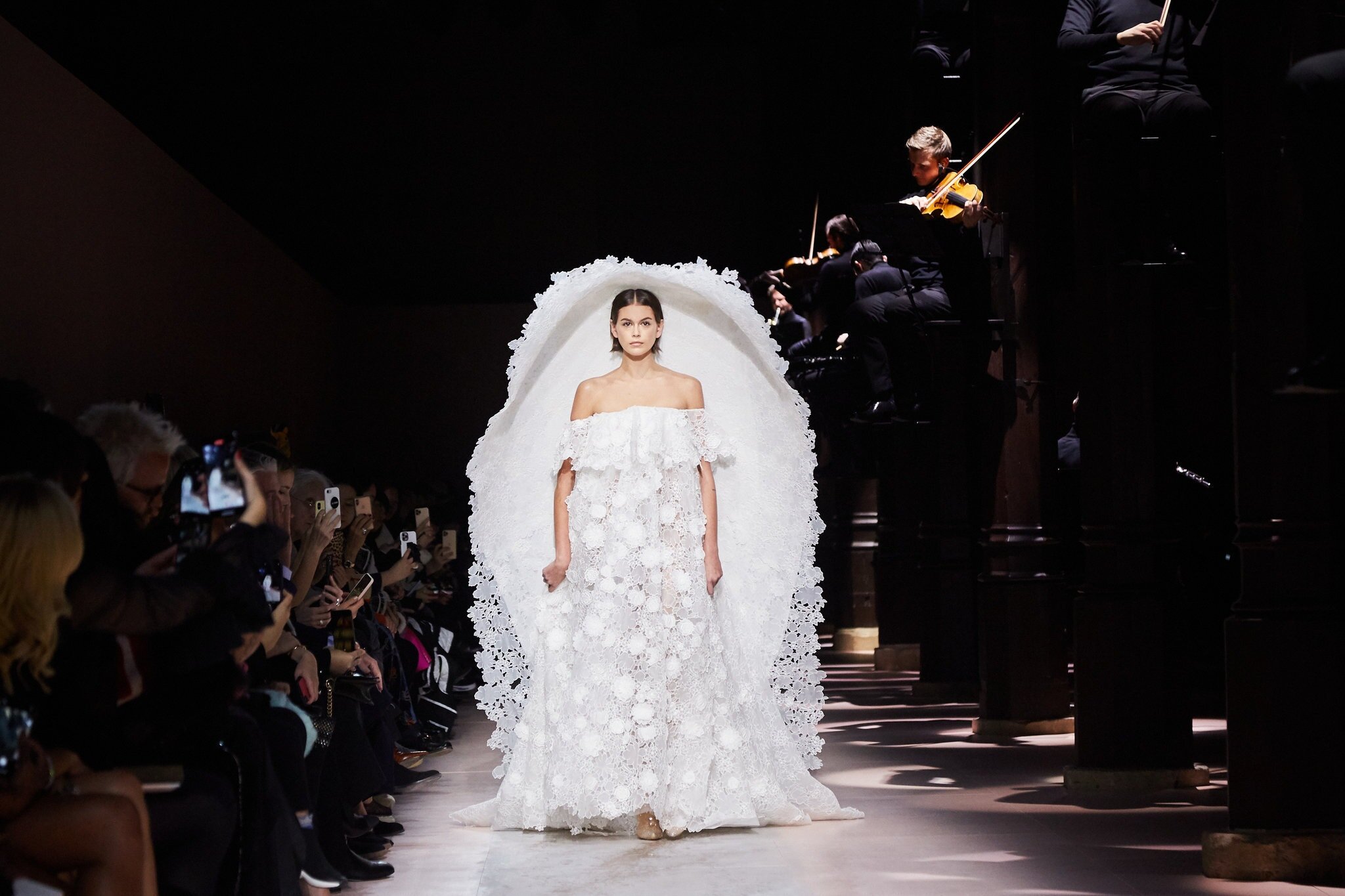T Magazine: Couture Spring 20 Round-up
Fifty years after founding his namesake label, Jean Paul Gaultier bid goodbye to the runways with a spectacular show that harkened back to the glory days of the ’80s and ’90s, when catwalk extravaganzas were as much about theater as they were about fashion. The audience that gathered at the Théâtre du Châtelet to witness this farewell included Gaultier’s former intern Nicolas Ghesquière (now the artistic director of Louis Vuitton), the designers Christian Lacroix and Dries Van Noten and Carla Bruni-Sarkozy, the French pop star, former model and wife of former President Nicolas Sarkozy. Ever the showman, Gaultier opened with a sequence of black-clad mourners and pallbearers who carried a studded coffin as Boy George sang Amy Winehouse’s “Back to Black.” The model Karlie Kloss then opened the coffin to reveal the first of the show’s more than 200 looks: inside was a model wearing a white baby-doll dress. A diverse lineup of Gaultier’s favorite muses from every era followed, including the Spanish actress Rossy de Palma, the French filmmaker and model Farida Khelfa, the French model and singer Amanda Lear, the American burlesque performer Dita von Teese and the Canadian model Coco Rocha, who replicated the Celtic jig she performed for the house’s fall 2007 show. The procession, which lasted over an hour, was broken down into sections that showcased Gaultier’s greatest hits: men in skirts, his beloved Breton stripes, trompe l’oeil, corsetry, underwear-as-outerwear. For the finale, the cast gathered to carry Gaultier aloft while Boy George sang Culture Club’s “Church of the Poisoned Mind.” What could have been a maudlin affair was instead a joyous celebration of not only Gaultier’s legacy, but also couture’s enduring ability to make us dream.
At the Valentino show, staged as usual at the Hôtel Salomon de Rothschild, guests were seated in semidarkness. This dreamy twilight setting proved a perfect backdrop for Pierpaolo Piccioli’s latest collection, which drew on the works of the Swiss psychoanalyst Carl Jung and explored the world of dreams and the subconscious — influences that yielded surreal pieces such as a floor-length opera coat printed with goldfish and towering coral-like headdresses. While Piccioli’s love of ruffles, embroideries and bows was as evident as ever, his silhouettes this season were comparatively restrained, as seen in a selection of slinky floor-skimming column dresses and fishtail gowns. By cutting the backs of his dresses dramatically low, Piccioli also introduced a fresh sensuality into the mix.
With a flowery scent in the air and a live orchestra playing Philip Glass’s soundtrack from the 2002 movie “The Hours,” Clare Waight Keller transported guests at the Givenchy show to the famous gardens of Sissinghurst, the former home of the writer Vita Sackville-West, and Virginia Woolf’s country retreat Monk’s House; Waight Keller had been inspired by the love letters that the two women wrote to each other. Accordingly, many of the looks felt like wearable bouquets, with exploding sprays of tulle and chiffon, dramatic ruffles, gigantic bows blossoming at the neckline and embellishments made out of thousands of delicate sequins. Waight Keller dug into the Givenchy archives for the inspiration for the wide-brimmed hats, including the floor-length style that nearly enveloped the model Kaia Gerber, who wore an off-the-shoulder bridal gown of exquisite guipure lace.
For Virginie Viard’s sophomore haute couture collection as the artistic director of Chanel, she recreated the vegetable garden of the Abbey of Aubazine, the orphanage where Coco Chanel grew up, within the Grand Palais. Working in an austere palette of black, gray and white, she sent out an array of pared-back silhouettes that featured plenty of Chanel signatures (Peter Pan collars, prim tweed skirts) realized with a distinct lightness of touch — several featured tulle or chiffon overlays. Even the bridal look for the finale was stripped back and modest: a simple white schoolgirl dress paired with a discreet veil, white socks and black patent shoes.
With each Christian Dior couture collection, Maria Grazia Chiuri celebrates the work of a different female visionary: Past collaborators have included the novelist Chimamanda Ngozi Adichie and the artist Penny Slinger. This season, Chiuri invited the pioneering feminist artist Judy Chicago to create a spectacular sculpture in the garden of the Musée Rodin that doubled as the show’s set. The work, titled “The Female Divine,” resembled a voluptuous female figure, and its internal chamber contained a series of large banners embroidered with questions including “What if Women Ruled the World?” For her collection, Chiuri drew inspiration from classical Greece — one recurring motif was a golden ear of wheat — as well as representations of ancient goddesses, showing a variety of fringed and draped Grecian gowns in a palette of dusty gold and jewel tones.
The Dutch couturier Iris Van Herpen turned to the oceans to find inspiration for her latest collection, titled “Sensory Seas.” Models walked onto the runway past a trio of swirling kinetic sculptures by the British artist Paul Friedlander that evoked waves. Van Herpen also cited the anatomical drawings of the Spanish neuroscientist Santiago Ramon y Cajal as a reference; she replicated the delicate lines of his illustrations by heat-bonding silk onto leaves of transparent organza, which were then embroidered onto what she described as laser-cut “exoskeletons.” Elsewhere, she paid tribute to hydrozoa, a class of small sea animals, by layering circles of organza hand-painted with coral motifs.












